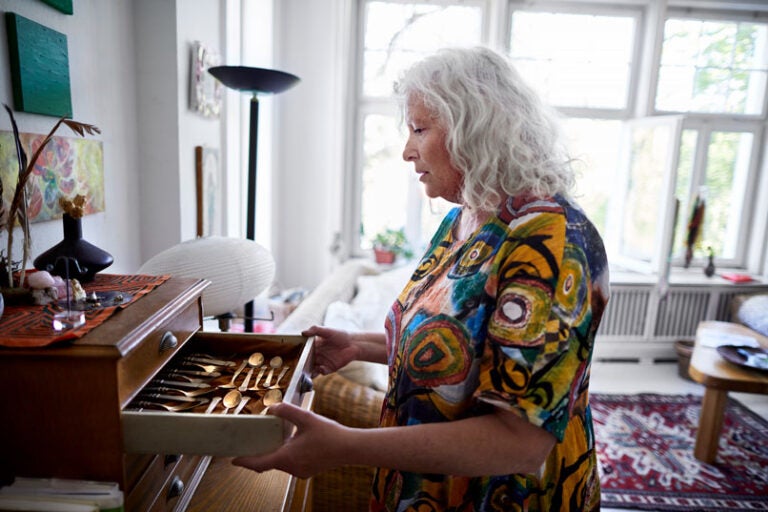Whether they’re downsizing or just decluttering, many people hoping to pass treasured items on are discovering that members of the next generation aren’t willing recipients. Discovering your kids don’t want your heirlooms can be disappointing. However, before you let hurt feelings get the best of you, here’s some expert advice for overcoming disappointment and maybe even turning these uncomfortable situations around.
Know That You Aren’t Alone
Jamie Baum’s story is an increasingly common one. When her son moved overseas, he returned a serving tray she’d given him for his wedding. The serving tray had been her mother’s. “I definitely felt slighted. My gifts, given with love and with the hope that they’d be cherished, often-used pieces, were not valued,” she says.
Home organizers hired to help people declutter or downsize report that adult children often say they don’t want items ranging from treasured heirlooms to antique furniture. Understanding that it’s not unique to you can help it seem less personal.
“I find that this is all too common nowadays. Younger generations are buying inexpensive, ‘disposable’ furniture that can easily and cheaply be replaced when their tastes change,” says Lauren Saltman, a professional organizer who owns Living. Simplified. LLC.
Talk About Your Wishes Early
Part of the problem, experts say, is that family members don’t have the conversation about their expectations for hand-me-downs early enough. Some families get ahead of it years before items will be distributed by asking children what they’d like to keep. Parents have plenty of time to adjust to any disappointment the choices might bring and consider alternative options.
“To prepare clients for the possibility of rejection and disappointment, I encourage open and honest communication with their children early in the process. This helps set realistic expectations and allows both parties to express their thoughts and feelings,” says Olivia Parks, owner of Professional Organizer New Orleans. She says these conversations can also help everyone better understand each other’s priorities.
Share the Item’s Story
Sometimes, knowing the story behind heirlooms you want to pass along can turn an “I don’t think so” into a “yes.”
“By explaining the history and significance of these items, parents can better assess their children’s interests, helping to prevent potential disappointment,” Parks says.
Organizer Sarah Dunn’s grandmother is taking photos of items family members might be interested in and writing their history. Dunn’s aunt is compiling the photos and stories into a book for all family members to appreciate, regardless of the items they select.
Megan Pickens, a therapist and founder of Volition Collective Counseling who helped her mother find new homes for no-longer-wanted items, has already decided she’ll ask her daughter to keep just a handful of cherished heirlooms when Pickens is ready to release them. She will follow the advice she gives others, which is to share the story behind the objects to explain why they’re special. “My three items are my grandmother’s china cabinet, her stereo from the ‘50s that still works, and a chest of drawers that is the first piece of furniture I bought myself at 20 years old,” she says.
Accept That You Have Different Tastes
Offspring often decline to accept household items because they don’t share their parents’ taste or lifestyle. Younger generations are less likely than their grandparents, for example, to use fine china, silver, and crystal when entertaining. In addition, those in small, urban apartments or homes don’t have the storage space for nonessentials.
“The dark wooden furniture of our parents’ and grandparents’ generations aren’t the more modern look that today’s youth want in their homes,” says Saltman.
And don’t forget that if roles were reversed, you might not want their treasures, either. “I explain to clients that in the same way that the parent wouldn’t want all of their children’s things, the reverse is bound to happen,” says Dunn of Ready Set Organize.
Make Someone Else Happy
The best antidote to the sting of rejection is finding a different home to welcome your collections, treasures, or mementos. While donating to Goodwill and similar charities is an option, using local “buy nothing” Facebook groups is an especially good strategy because it allows donors to meet the new owners.
That’s what Dunn did when one of her clients couldn’t find a new family home for her grandmother’s vintage German china. “The woman who picked it up had ties to Germany and was so excited about giving the set another life. My client was delighted to know someone else could use them, and that allowed her to overcome the initial feeling of rejection she felt from her daughter,” says Dunn.
Organizer Brenda Scott of Tidy My Space also finds that reassuring people she won’t throw out any item that is still useful helps minimize sad feelings or negative emotions. “That’s the first thing they think when no one wants the items. It breaks their hearts to think they will be tossed into the garbage,” she says.
Make Peace
Baum overcame her hurt feelings when her son returned the family heirloom by remembering the tough decisions she had to make about what to keep when clearing out her late mother’s home.
“That experience taught me an important lesson, that these were my mom’s treasures and memories, not mine. She’d toted them from house to house for more than 60 years, so I knew how important they’d been to her. But for me, they were just things. Having an extra serving platter wouldn’t make me remember my mom more often or more lovingly,” she says.
Things are, after all, just things, even when they’re heirlooms. What we carry in our hearts is more important than what we display in our homes.
Seniority is published by Finance of America Reverse LLC. The views expressed in this publication are those of the author alone and do not necessarily reflect the views and opinions of Finance of America Companies. This article is intended for general informational and educational purposes only and should not be construed as financial or tax advice. For more information about whether a reverse mortgage may be right for you, you should consult an independent financial advisor. For tax advice, please consult a tax professional.




